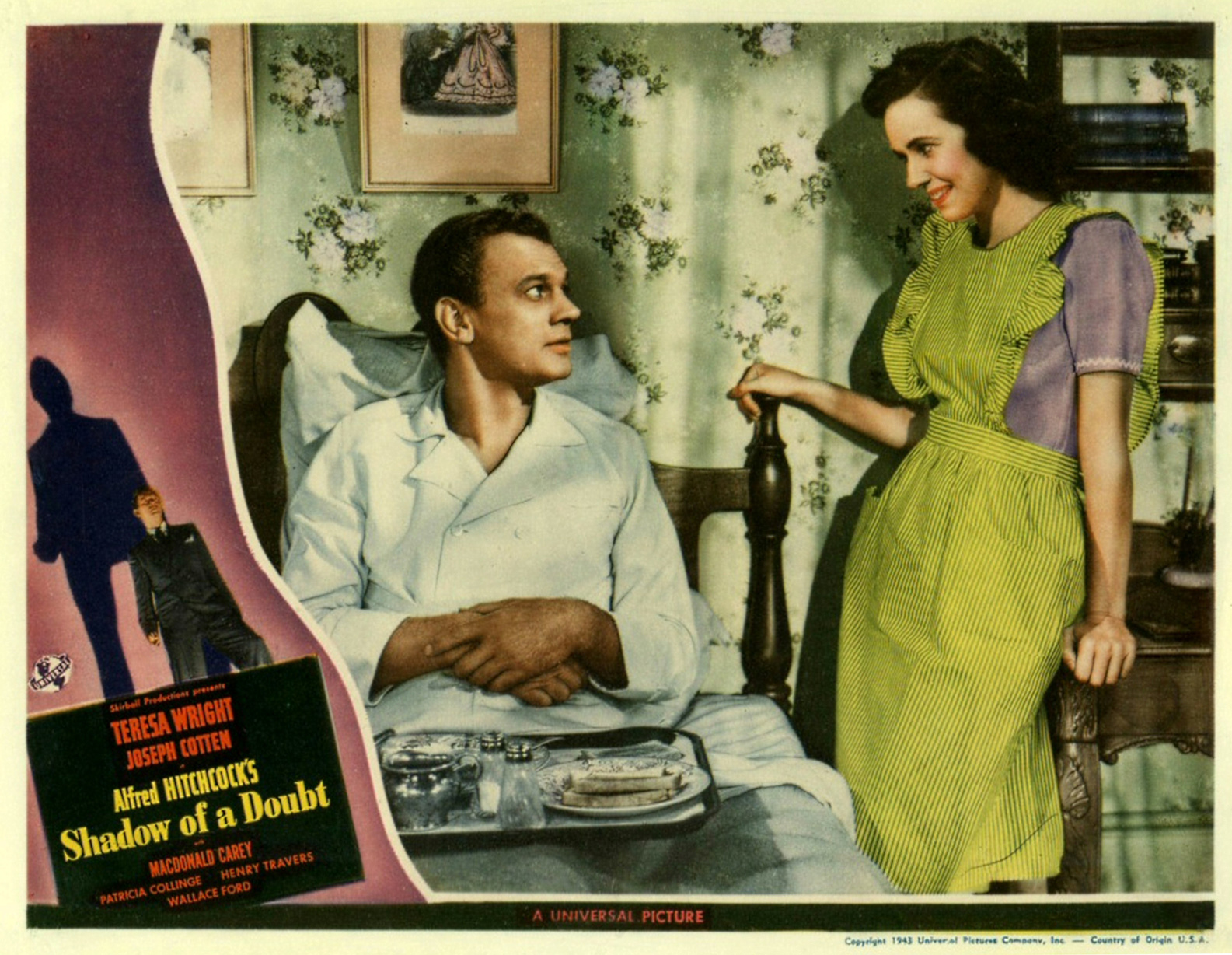

I wasn't surprised that the film failed to score in that list we just made, if only because the whole cast is so memorable. While we're on the subject of Alfred Hitchcock, having just discussed the most memorable performances in his films, we thought we'd look at Hitchcock's own favorite Shadow of a Doubt (1943) for this week's Hit Me With Your Best Shot. Her true guilt is entirely in not telling anyone about what she has learned of her Uncle Charlie. Uncle Charlie's guilt is transferred to his niece because she is the only one who knows about it, and this creates a dilemma for her in her family and her community. Her uncle is suspected, and she could turn him in and protect other women. Her guilt comes because she knows something and does not tell others.

No one suspects Young Charlie of committing the murders, and her guilt is not that sort of guilt. The transference of guilt is not direct in this film. William Rothman calls this Hitchcock's first American film to be the equal of his British work and says that it "gives form to all he learned in Hollywood as it declares continuity with the whole body of his earlier work." Once she knows, we watch to see what she does about it, knowing the conflict facing her because she loves her Uncle. The suspense is created by the fact that the audience knows Uncle Charlie is a killer and waits to see how young Charlie will figure it out for herself. Young Charlie takes on the guilt of her uncle because she knows about it and says nothing, and she is nearly killed because of this. The idea of guilt and transference is clearly important in Shadow of a Doubt from 1943, and part of the fascination one has with this film is in seeing the ways in which this theme is presented.

For Hitchcock, the hero was always actually guilty of something, some sin in his life, which he would have to pay for by suffering through this period of false accusation. One way this was seen was that the hero or heroine would often be accused of a crime he or she did not commit, but there is more to it than that. One of the themes found in the films of Alfred Hitchcock is known as the transference of guilt, a theme Hitchcock first used when he was still working in England and that he continued with his American films.


 0 kommentar(er)
0 kommentar(er)
